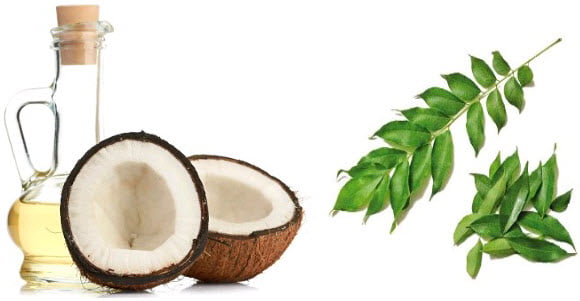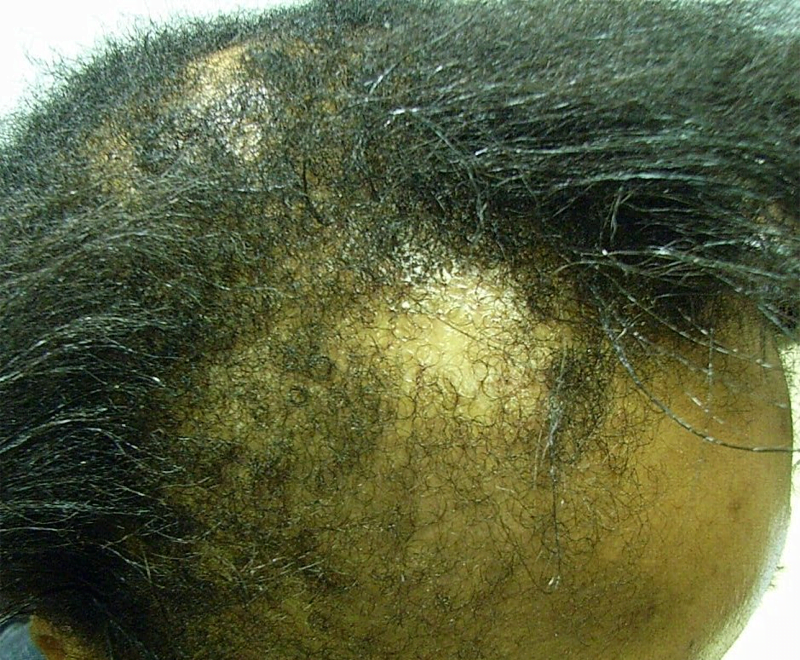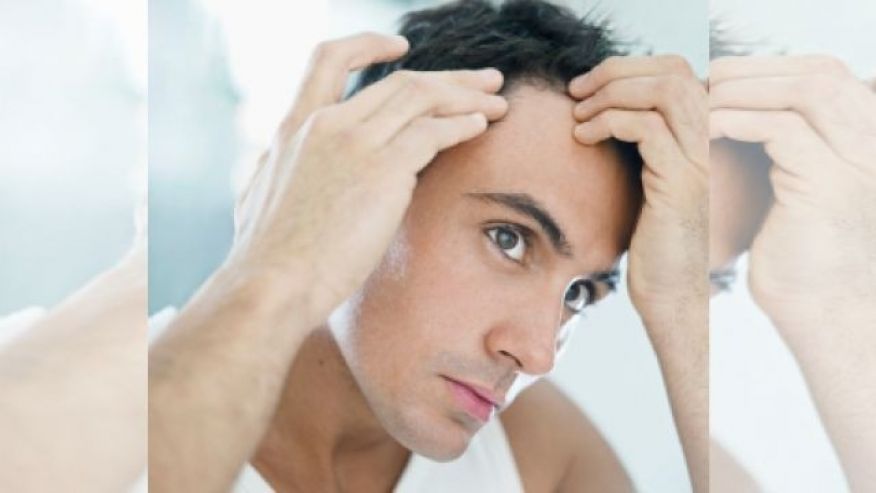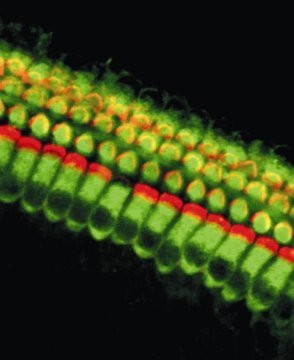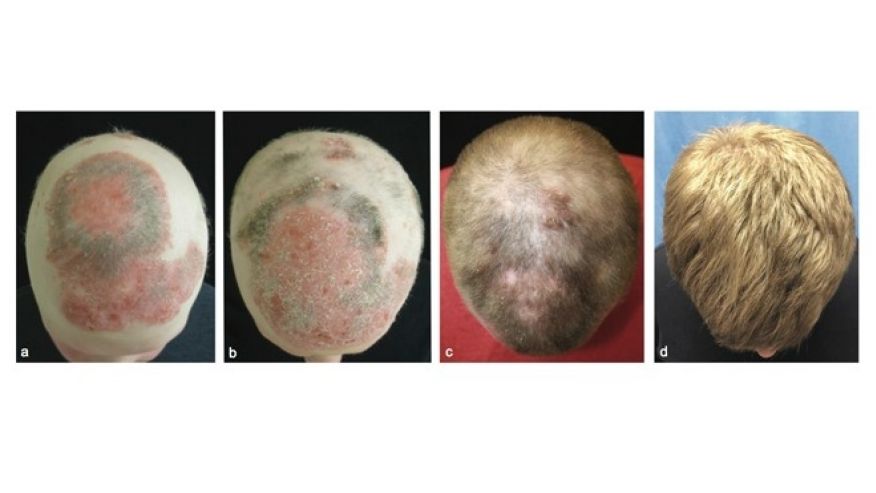Liposuction, also called lipoplasty, liposculpture suction lipectomy, or lipo, is a type of cosmetic surgery which breaks up and “sucks” fat from various possible parts of the body, most commonly the abdomen, thighs, buttocks, neck, chin, upper and backs of the arms, calves, and back. The fat is removed through a hollow instrument – a cannula – which is inserted under the skin. A powerful, high-pressure vacuum is applied to the cannula.
Liposuction is the most common cosmetic operation in America and the United Kingdom. Over 400,000 procedures are carried out in the USA each year.
Patients who undergo liposuction generally have a stable body weight, but would like to remove undesirable deposits of body fat in specific parts of the body. It is not an overall weight-loss method – it is not a treatment for obesity. Liposuction does not removecellulite, dimples or stretch marks. The aim is esthetic – the patient wishes to change and enhance the contour of his/her body.
Liposuction permanently removes fat cells from the body. It can alter the shape of a body. However, if the patient does not lead a healthy lifestyle after the operation there is a risk that the remaining fat cells grow bigger.
The amount of fat that can be safely removed is limited. Liposuction has a number of possible risks, including infection, numbness and/or scarring. If too much fat is removed there may be lumpiness or dents in the skin. Experts say that the surgical risks are linked to the amount of fat removed.
Some medical conditions may benefit from liposuction, including:
- Lipomas – benign fatty tumors.
- Gynecomastia – where fatty breast tissue has developed in men.
- Lipodystrophy syndrome – a lipid (fat) metabolism disturbance in which there is too much fat in some parts of the body and partial or total absence of fat in other parts. Sometimes a side effect of some HIV medications.
Liposuction – a short history
Liposuction was invented in 1974 by two Italian-American surgeons – Doctors Giorgio and Arpad Fischer. The roots of liposuction date back to the 1920s. Dr. Dujarier, a French surgeon performed a fat removal procedure on a model in 1926 which tragically resulted ingangrene in one of her legs; consequently, interest in body contouring receded for several decades.
In the late 1960s Leon Forrester Tcheupdjian, a European surgeon used primitive curettage techniques to remove fat – however, results were patchy, there was a lot of bleeding and morbidity was high.
What we know as ‘modern liposuction’ started with a presentation in 1982 by Dr. Yves-Gerard Illouz, a French surgeon. He started what became known as the ‘Illouz Method” – a technique of suction-assisted lipolysis (breakdown or destruction of fats) after infusing fluid into tissues using blunt cannulae and a high-vacuum suction. Illouz demonstrated both reproducible good results and low morbidity. During that decade several US surgeons experimented with liposuction, developing some variations from the Illouz Method, with mixed results.
In 1985 the tumescent technique was described by Drs. Jeffrey Alan Klein (USA) and Patrick Lillis (USA), which added elevated volumes of liquid containing a local anesthetic, allowing the technique to be carried out in an office setting under intravenous sedation, rather than general anesthesia. There were concerns about the high volume of fluid and lidocaine toxicity potential with tumescent techniques, which eventually led to the concept of lower volume super wet tumescence.
Near the end of the last century ultrasound was introduced to assist in the removal of fat, which was initially liquefied through the application of ultrasonic energy. However, there was an increase in reported cases of complications.
In recent years laser tipped probes – which induce thermal lipolysis – have been introduced. How beneficial they are over traditional techniques still remains to be determined.
Over the last three decades, advancement in liposuction techniques have meant that a larger number of fat cells can be removed with less blood loss, risk, discomfort, and shorter recovery periods. Fat can also be used today as a natural filler (autologous fat transfer), where fat is taken from one part of the body, cleaned, and then injected into another area of the body – for example, to enhance the shape of the buttocks or reduce wrinkles.

What are the uses of liposuction?
Liposuction is mainly used to improve how a person looks, rather than providing any physical health benefits. In many cases, the patient would probably achieve the same results, and sometimes better ones if they adopted a healthy lifestyle – good diet, regular exercise and a good night’s sleep every night.
Experts say that liposuction should ideally only be used if the individual did not achieve the desired results with a lifestyle change. For example, if some obstinate areas of fat that are resistant to exercise and diet.
When you gain weight each fat cell increases in size and volume. Liposuction reduces the number of fat cells in isolated areas. How much is removed from a specific area depends on its appearance and the volume of fat. Contour changes resulting from liposuction can be long-lasting, as long as the patient’s weight does not increase.
Liposuction is only done in relatively small areas of the human body, and is in no way a treatment for obesity or long-term weight loss. It should not be used if the person wants to get rid of stretch marks, cellulite, dimpling, or other skin surface irregularities.
Patients should discuss the pros and cons of liposuction with their GP (general practitioner, primary care physician) before deciding on whether to proceed. If the individual still wants to go ahead, they should talk to their surgeon sincerely about why they want to do it, what they hope to gain out of it personally, and what their expectations are.
Liposuction should only be carried out after a lot of thought. Results are never dramatic; they are subtle.
The following body areas are commonly targeted for liposuction treatment:
- Abdomen
- Back
- Buttocks
- Chest
- Inner knees
- Hips
- Flanks (love-handles)
- Neckline and the area under the chin (submental)
- Thighs – saddlebags (outer thighs), and inner thighs
- Upper arms
According to the American Society of Aesthetic Plastic Surgery, liposuction is performed more commonly on the thighs and abdomen of women, and the abdomen and flanks (sides, love-handles) of men.
Experts say that the best liposuction candidates are those who have good skin tone and elasticity, where the skin molds itself into new contours. People whose skin lacks elasticity may end up with loose-looking skin in areas where the procedure was done. The patient needs to be in good health – people with circulation (blood flow) problems, such as coronary artery disease, diabetes, as well as those with weakened immune systems should not undergo liposuction. Candidates should be over the age of 18 years. Liposuction is sometimes used to treat certain conditions, including:
- Lymphedema – a chronic (long-term) condition in which excess lymph (fluid) collects in tissues, causing edema (swelling). The edema commonly occurs in the arms or legs. The fluid accumulation occurs faster than it can be drained away. Liposuction is sometimes used to reduce swelling, discomfort and pain.
However, doctors tend only to use liposuction with patients who have severe symptoms. After the operation patients have to wear a compression bandage for several months, sometimes up to a year after the operation.
- Gynecomastia – sometimes fat accumulates under a man’s nipples. Liposuction can remove some of the fat, reducing the swelling.
- Lipodystrophy syndrome – fat accumulates in one part of the body and is lost in another. Liposuction can improve the patient’s appearance by providing a more natural looking body fat distribution.
- Extreme weight loss after obesity – if a morbidly obese person has lost at least 40% of his/her BMI (body mass index) after perhaps a gastric band or bypass procedure, excess skin and other abnormalities may need treatment. Sometimes liposuction is used to correct abnormalities.
What happens before and during the liposuction operation?
Before the operation – patients will need to undergo some health tests to ensure that they are fit for surgery. The medical team will ask the patient to:
- Stop taking aspirin and anti-inflammatory drugs for at least two weeks before the surgery.
- Women – if undergoing an extensive operation, they may be asked to stop taking the contraceptive pill for a specific period before the operation.
- Patients with anemia – they will be asked to take iron supplements for a specific period before the operation.
- Consent form – the patient will be asked to sign a consent form, which confirms that they are fully aware of the risks, benefits and possible alternatives to the procedure.
During the operation
The surgeon will mark out lines on the patient’s body, indicating where treatment will take place. Photos of the target area, and sometimes the patient’s whole body may be taken; they will be compared to pictures of the same areas taken afterwards.
Anesthesia – the patient will most likely be under a general anesthetic; they are put to sleep before the procedure and remain so during it. A liposuction operation may last from 1 to 4 hours. The doctor may use an epidural for treatments on the lower body – the anesthetic is injected the epidural space surrounding the dura (fluid-filled sac) around the spine, partially numbing the abdomen and legs. A local anesthetic may be used when liposuction is done on very small areas.
Patients may feel a dull rasping during the procedure as the cannula moves under the skin. This is normal. If any acute or different pain is felt the doctor needs to be told, as the medication or movements may need modification.
If the patient requires only local anesthesia, he/she may be asked to stand up during the procedure to ensure proper fat removal.
One of the following liposuction techniques may be used:
- Tumescent liposuction – several liters of a saline solution with a local anesthetic lidocaine and vessel-constrictor epinephrine (adrenaline) is pumped subcutaneously (below the skin) in the area that is to be suctioned. Epinephrine helps minimize bleeding, bruising and post-operative swelling. The fat is suctioned (sucked out) through small suction tubes (microcannulas). This is the most popular form of liposuction.
The amount of liquid pumped into the area may be up to three times the amount of fat to be removed. This volume of fluids creates a space between the muscle and the fatty tissue, allowing more maneuverability for the cannula.
- Wet liposuction – a small amount of fluid with less volume than the amount of fat to be removed is injected into the target area. The fluid is similar to the one used in tumescent liposuction and minimizes bleeding and bruising. The fluid helps loosen the fat cells. The fat cells are suctioned out.
- Super-wet liposuction – this technique uses less liquid that tumescent liposuction; about the same amount of liquid as fat to be removed. Otherwise, the technique is very similar to tumescent liposuction. The patient may need a separate anesthetic.
- Dry liposuction – no fluid is injected before fat is removed. This method is seldom used today. There is a higher risk of bruising and bleeding.
- Ultrasound-assisted liposuction (UAL) , also known as ultrasonic liposuction – the cannula is energized with ultrasound. This makes the fat melt away on contact – the ultrasound vibrations burst the walls of the fat cells, emulsifying the fat (liquefying it) and making it easier to suction out. This method is a good choice for working on more fibrous areas, such as the male breast, back, and in areas where liposuction had been done before.
UAL is especially useful for stubborn fat accumulations. However, longer incisions in the skin are needed for this procedure, and there is a risk of skin or internal burns. This procedure takes longer than the others, because it is often done alongside tumescent liposuction. It is also more expensive. After ultrasonic liposuction, it is necessary to perform suction-assisted liposuction to remove the liquefied fat.
UAL techniques were initially linked with cases of tissue damage, generally because of over-exposure to ultrasound energy. A third-generation UAL device – the Vaser Lipo system – prevents this problem by using pulsed energy delivery and a specialized probe that allows surgeons to safely remove excess fat.
- Power-assisted liposuction (PAS) , also known as Powered liposuction – uses a specialized cannula with a mechanized system that rapidly moves back-and-forth, allowing the surgeon to pull out fat more easily. It is similar to traditional UAL, but the surgeon does not need to make so many manual movements, as in other methods.
This method may sometimes cause less swelling and pain, and may allow the surgeon to remove fat with more precision, especially in smaller areas.
- Laser Assisted Lipolysis (LAL) , or laser-guided lipo – requires the use of tumescent fluid. It is a far less invasive and bloody procedure than the traditional liposuction method for removing fat. A microcannula is inserted through a small incision to deliver laser energy and heat into subcutaneous fat (fat under the skin).
The liposuction cannula – this is a stainless steel tube, which is inserted through an incision in the skin and is used to suction the fat (suck the fat out).
The liposuction microcannula – is a very small cannula with an inside diameter of less than 3 mm (some experts define them with less than 2.2mm diameter).

Liposuction surgery tools
The size of the cannula can influence how smooth the skin is after liposuction. Large cannulae tend to create irregularities more commonly than microcannulas. Large cannulae are more frequently used for total-body liposuction.
After an area has been prepared for treatment, a small cut is made (sometimes several, depending on the size of the area), and a microcannula is inserted into the cut. The microcannula is attached to a special vacuum machine. The microcannula first loosens and then sucks the fat out of the area.
Draining out excess fluid and blood – after the operation the surgeon may leave the incisions open so that fluid can drain from the body.
After the liposuction operation
- Anesthetic – patients who underwent a general anesthetic usually spend the night in hospital. Those who had a local anesthetic may be able to leave hospital on the same day. Patients should not drive for at least 24 hours after receiving an anesthetic.
- Support bandages – the patient will be fitted with either an elasticated support corset or bandages for the targeted area after the operation. They help reduce inflammation and bruising. They should be worn for several weeks. It is important to follow the doctor’s advice on keeping the area clean and how to do this.
- Antibiotics – patients may be given antibiotics immediately after the operation.
- Painkillers – the doctor will most likely prescribe or recommend analgesics (painkillers) to relieve pain and inflammation.
- Stitches – the patient will be given a follow-up appointment to have the stitches removed.
- Bruising – there will be significant bruising in the targeted area. The amount of bruising is usually linked to how big the targeted area was. The bruising may go on for several weeks; in some cases for as long as six months.
- Numbness – patients may experience numbness in the area where fat was removed. This should improve within six to eight weeks.
Results – patients and their doctors will not be able to fully appreciate the results of liposuction until the inflammation has gone down, which in some cases may take several months. Typically, most of the swelling will have settled after about four weeks and the area where fat was removed should appear less bulky.
Patients who maintain their weight can usually expect permanent results. Those who gain weight after the procedure may find that their fat distribution alters. Those who previously had fat accumulating in their hips might find that their buttocks become the new problem area.
If a patient has thought everything through carefully beforehand, talked to their GP and surgeon about their aims, motives and expectation, the surgeon is skilled and well qualified, and there are no complications, most patients are pleased with their results.
What are the risks of liposuction?
Any type of major surgery carries a risk of bleeding, infection and an adverse reaction to anesthesia. Risk of complications is usually associated with how large the procedure is, as well as the surgeons skills and specific training. The following risks, unpleasant side effects, or complications are possible:
- Bad bruising – this is especially the case if patients have been taking anti-inflammatory medications or aspirin. Patients with a tendency to bleed are also at higher risk of bad bruising.
- Inflammation – the swelling in some cases may take up to six months to settle. Sometimes fluid may continue to ooze from the incisions.
- Thrombophlebitis – a blood clot forms in a vein, causing inflammation of that vein. This may affect liposuction patients, especially inside the knee and on the inside of the upper thigh (when these areas have been treated).
- Contour irregularities – if the patient has poor skin elasticity, has healed in an unusual way, or fat removal has been uneven, the skin may appear withered, wavy or bumpy. This undesirable result may be permanent. The cannula may cause damage that makes the skin appear spotted. Seromas may form under the skin (temporary pockets of fluid), which may need to be drained.
- Numbness – the area that was worked on may feel numb for a while; this is usually only temporary. There may also be temporary nerve irritation.
- Infections – although rare, skin infections may occur after liposuction surgery. Sometimes this needs to be treated surgically, with the risk of scarring.
- Internal organ punctures – this is very rare. If the cannula goes in too deeply one of the internal organs may be punctured. Further surgery may be required. Internal organ punctures can be life-threatening.
- Death – anesthesia carries with it a small risk of death.
- Kidney or heart problems – as fluids are being injected and or suctioned, the change in the body’s fluid levels may cause kidney or heart problems.
- Pulmonary embolism – fat gets into the blood vessels and travels to the lungs, blocking the lungs. This can be life-threatening.
- Pulmonary edema – this may be a result of fluid being injected into the body. Fluid accumulates in the lungs.
- Allergic reaction – there may be an allergic reaction to medications or material used during surgery.
- Skin burns – the cannula movement may cause friction burns to the skin or nerves.
- Lidocaine toxicity – in the super-wet or tumescent methods, too much saline fluid may be pumped into the body, or the fluid may have excessively high concentrations of lidocaine. If lidocaine levels are too high for the patient’s system he/she may experience lidocaine poisoning (toxicity) – initially they will experience tingling and numbness, then seizures, followed by unconsciousness, and possibly respiratory or cardiac arrest.
[Source:- Medicalnewstoday]

